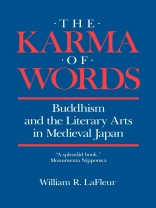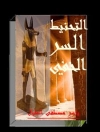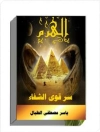‘A masterly book . . . will prove of great assistance to a student of Japanese literature and thought from the eleventh century onwards.’ –Times Literary Supplement ‘A major contribution to the fields of Japanese studies, comparative literature, and history of religions . . . a book that begs for classroom use.’ –The Eastern Buddhist ‘Innovative and provocative . . . will be of interest not only to specialists in Japanese religion and Japanese culture, but also to literary critics and cultural historians.’ –Religious Studies Review ‘Rich and stimulating material . . . an important help and influence to all concerned with understanding the tradition that has shaped Japanese culture and religion.’ –History of Religions ‘Thought provoking, finely written . . . one of the more original and creative contributions to the study of medieval culture and religion to be produced by a Western scholar. . . . Can be read with profit by all Western students of Japanese culture . . . one of those rare books that has something to offer Japanese specialists in medieval studies.’ –Journal of Japanese Studies ‘A very important contribution to Japanese studies . . . a paradigm of the genre.’ –Pacific Affairs ‘This is an exciting, ground-breaking book.’ –Chanoyu Quarterly ‘I have been most impressed and even excited by what I have read.’ –Donald Keene, Professor Emeritus and Shincho Professor Emeritus of Japanese Literature at Columbia University ‘This is one of the most important books in Japanese studies in a long time and will influence the entire field.’ –Robert Bellah, former Elliott Professor of Sociology, Professor Emeritus at the University of California, Berkeley
‘A masterly book . . . will prove of great assistance to a student of Japanese literature and thought from the eleventh century onwards.’ –Times Literary Supplement ‘A major contribution to the fields of Japanese studies, comparative literature, and hi
Cuprins
PREFACE
MAJOR ERAS OF JAPANESE HISTORY
I. ‘FLOATING PHRASES AND FICTIVE UTTERANCES’:
THE RISE AND FALL OF SYMBOLS
2. IN AND OUT THE ROKUDO: KYOKAI AND THE FORMATION
OF MEDIEVAL JAPAN
3. INNS AND HERMITAGES: THE STRUCTURE OF
IMPERMANENCE
4. SYMBOL AND YUGEN: SHUNZEI’S USE OF TENDAI
BUDDHISM
5. CHOMEI AS HERMIT: VIMALAKIRTI IN THE ‘HOJO-KI’
6. ZEAMI’S BUDDHISM: COSMOLOGY AND DIALECTIC IN
NO DRAMA
7. SOCIETY UPSIDE-DOWN: KYOGEN AS SATIRE AND AS
RITUAL
8. THE POET AS SEER: BASHO LOOKS BACK
NOTES
JAPANESE NAMES AND TERMS
BIBLIOGRAPHY
INDEX
Despre autor
William R. La Fleur is the E. Dale Saunders Professor in Japanese Studies, Department of East Asian Languages and Civilizations, University of Pennsylvania












